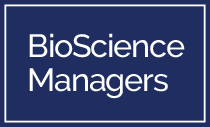Bipartisan bill proposes new ‘pull’ incentives for priority antibiotics
Representatives in the US House of Representatives yesterday introduced a bipartisan bill to encourage the development of new antibiotics, a move one expert called the most important antibiotic legislation in a generation.
Currently, only a few large drug companies are involved in antibiotic research and development, because the cost of developing the drugs is so high and profit margins are so slim. Most new developments are modifications of existing drugs, and it’s been three decades since the last new class of antibiotics was discovered.
Experts have been advocating for “push” incentives that spur development, but that type doesn’t ensure that companies get an adequate return on their investment. On the other hand, the World Economic Forum said in report last week that effective “pull” incentives could be used to promote antibiotic stewardship, availability, and access.
REVAMP Act details
The bill, called the REVAMP Act of 2018, was introduced by Rep John Shimkus, R-Ind., and Rep Tony Cardenas, D-Calif. According to a summary of the proposed bill, the legislation would award 12 extra months of market exclusivity for drugs designated as priority antimicrobial products. A committee of representatives from the Food and Drug Administration, the Centers for Disease Control and Prevention (CDC), the Department of Health and Human Services BARDA, and physicians would develop a list of critical-need antimicrobials, focusing on the ones with unmet medical needs and multi-drug resistance.
Drug developers could request designation as priority antimicrobial products before and after filing for licensing, with the HHS secretary and the committee approving the request if they find it treats or prevents priority diseases from multidrug-resistant bacterial or fungal pathogens.
The bill contains several conditions for drug makers, such as tracking resistance data and assessing stewardship activities. As an incentive, drug makers can convey the award to one or more drugs and split up the award periods.
To assess the impact of the legislation, after the fifth award the CDC and Government Accountability Office would study the effectiveness of the program and the impact on patients. Also, the awards are limited to 10, after which Congress would need to reconsider and reauthorize the bill.
Stewardship and political palatability built into the bill
In a thread on Twitter yesterday after the bill was introduced to Congress, Kevin Outterson, executive director of the Combating Antibiotic Resistant Bacteria Biopharmaceutical Accelerator (CARB-X), said the proposal is the most important legislation in a generation. He said it’s hard to create “pull” incentives that companies trust to survive annual appropriations from Congress.
“REVAMP uses conveyable FDA exclusivities that can be applied to OTHER drugs as the prize,” Outterson said, estimating that the incentive is likely to be worth more than $ 1 billion.
In other words, the bill would pay for antibiotic innovation through delayed generic entry in the US on other drugs, he said. “Antibiotics make other therapies possible; this spreads those costs on other drug classes.”
Strong stewardship conditions are part of the bargain, and the companies make money on the prize, not the volume sold. “Paying more for value than volume, which is what you want in antibiotics,” Outterson wrote.
A key political feature of the bill is that it is budget neutral, he said, noting that studies begin after five prizes so that Congress will have information to consider renewal after 10 awards.
The antibiotic pipeline is near collapse, and the country needs to act now to preserve the infrastructure to support antibiotic research and development, Outterson said. “The house is on fire; let’s not argue about the perfect fire truck while it burns down.”
See also:
Kevin Outterson Twitter account
Proposed bill summary and text
Jun 26 CIDRAP News story “World Economic Forum seeks ‘pull’ incentives for new antibiotics“
Jun 12 CIDRAP News story “FDA head looks to boost antibiotic development“
